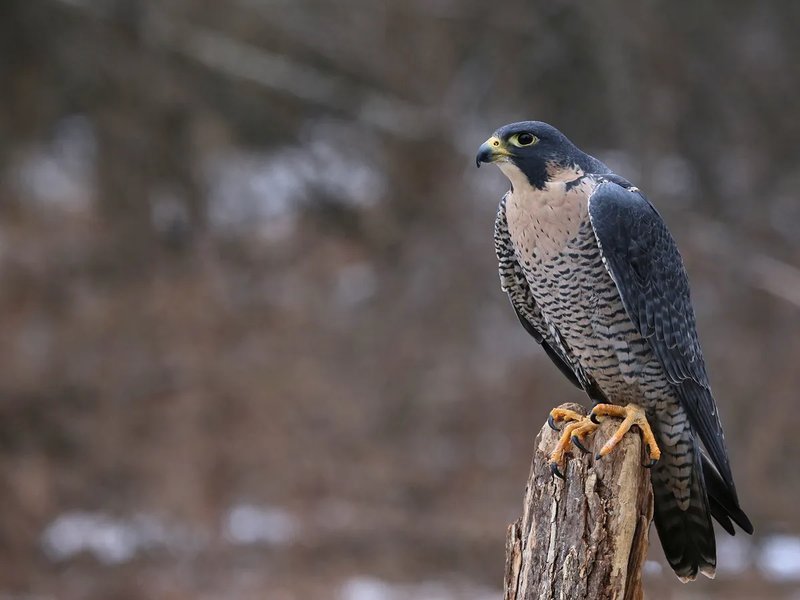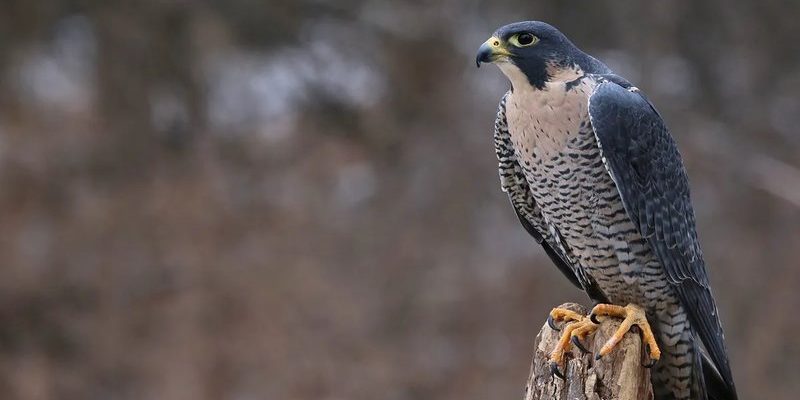
These remarkable raptors are adaptable, thriving in various environments from urban landscapes to remote wilderness areas. Each location offers unique opportunities for hunting and nesting, shaping their life experiences. So, grab a cup of coffee, and let’s explore the fascinating world of peregrine falcons and where they call home.
The Habitat of Peregrine Falcons
The habitat of peregrine falcons is diverse, reflecting their adaptability. While they’re often associated with high cliffs and rugged terrains, they’re equally at home in cityscapes. Think of them as the urban cowboys of the bird world, perched on skyscrapers or hunting in parks.
In general, peregrine falcons prefer open habitats where they can see their prey from a distance. Here are some of their favorite spots:
- Coastal cliffs: These provide high vantage points and access to seabirds, a primary food source.
- Forested regions: They can also be found in areas with significant tree cover, where they often hunt small mammals and birds.
- Urban settings: Increasingly, peregrines have adapted to city life, nesting on buildings and feeding on pigeons or other city birds.
This adaptability is crucial for their survival, especially as they have faced habitat destruction in many areas. Understanding their preferred habitats can help us protect these magnificent birds.
Global Distribution of Peregrine Falcons
Peregrine falcons have an extensive global distribution. You might be surprised to learn that they inhabit every continent except Antarctica! They thrive in a wide array of climates and landscapes.
In North America, for instance, they range from the Arctic tundra down to the southern tip of South America. In Europe, they inhabit a range of settings, from the fjords of Norway to the Mediterranean cliffs. And in Asia, they can be found in both urban environments and remote mountain ranges.
Their widespread presence is a testament to their resilience. It’s almost like they’ve got a built-in GPS that helps them adapt to different environments.
Breeding Habitats
When it comes to breeding, peregrine falcons prefer high places. Cliffs, skyscrapers, and even bridges make ideal nesting sites. These elevated spots not only protect their eggs from ground predators but also give them a strategic advantage when hunting.
Here’s a deeper look at their breeding preferences:
- Cliff faces: Natural geological formations provide a safe ledge for nesting, often surrounded by abundant prey.
- Man-made structures: In urban areas, they’ve taken a shine to ledges on buildings, exploiting the lack of natural predators.
- Remote locations: In less populated regions, they may choose locations far from human activity, ensuring a quieter environment for raising their young.
They generally build their nests, called scrapes, in shallow depressions, often lined with feathers and other soft materials. This nesting behavior reflects their need for security and comfort during the vulnerable breeding season.
Seasonal Migration Patterns
Interestingly, not all peregrine falcons are migratory. Some populations are resident, while others migrate seasonally in search of food or more suitable breeding grounds. This migration is often dictated by factors like food availability and weather changes.
In North America, for instance, some peregrines migrate south to warmer regions during winter, while others remain in their territories year-round. Here’s what you should know about their migratory habits:
- Timing: Migration typically occurs in late summer and early autumn, with falcons heading to warmer areas.
- Routes: They often follow topographical features like coastlines or mountain ranges, which provide both shelter and hunting opportunities.
- Adaptability: Some populations may even shift their range based on changing conditions, showing their incredible resiliency.
Being aware of these migration patterns helps scientists understand how climate change and habitat loss impact these magnificent birds.
Urban Adaptation of Peregrine Falcons
As cities expand, peregrine falcons have shown remarkable adaptability. They’ve traded rocky cliffs for concrete ledges, proving that they can thrive even in bustling urban environments. You might be wondering, how do they manage this?
Urban areas provide ample opportunities for hunting, primarily because of a high population of pigeons and other smaller birds. Here’s a closer look at how they adapt:
- Nesting sites: Skyscrapers and bridges often replace cliffs as nesting sites, offering an elevated view of their surroundings.
- Hunting technique: They’ve adapted their hunting methods to ambush city birds, optimizing their speed and agility.
- Human interaction: Surprisingly, they tend to tolerate human presence, often nesting in spots that provide protection from disturbances.
This urban adaptation not only helps them survive but also brings them closer to human populations, allowing us to appreciate their beauty in everyday life.
Conservation Status and Habitat Protection
Over the years, to protect peregrine falcons, conservation efforts have been vital. Once endangered due to pesticide use, habitat loss, and hunting, these birds have made a remarkable recovery thanks to collective efforts.
Conservation programs focus on protecting nesting sites and ensuring that their habitats remain stable. Here are some key initiatives:
- Habitat restoration: Efforts include protecting cliffs and natural nesting areas while promoting suitable urban nesting spots.
- Public awareness: Education about the importance of peregrine falcons and their role in ecosystems has grown, encouraging community involvement.
- Monitoring populations: Scientists regularly track peregrine populations to assess their health and adapt conservation strategies as needed.
It’s crucial for us to continue supporting these efforts, ensuring future generations can admire these beautiful hunters.
Understanding where peregrine falcons live is more than just an interesting fact; it reflects their resilience and adaptability. Whether soaring above cityscapes or nesting on high cliffs, they remind us of the importance of preserving natural habitats.
Their unique ability to thrive in diverse environments is a testament to their strength. As we continue to learn about and protect these incredible birds, we take a step toward maintaining the balance of our ecosystems. Next time you spot a peregrine falcon, you’ll not only see an impressive bird of prey but also a symbol of nature’s adaptability in a changing world.

